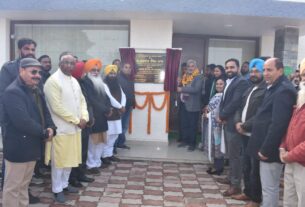On December 11th, in one of the most crucial judgements on the issue of ‘constitutional validity of the centre to abrogate Article 370 of the Indian constitution’ by the Honbl. Supreme Court, the Chief Justice of India, DY Chandrachud, while heading a five-judge bench, upheld the validity of the constitutional orders by the former President (Ramnath Kovind) to revoke the special status rendered to the erstwhile state of Jammu and Kashmir.
The judges gave three judgements:
- A single judgement by CJI DY Chandrachud;
- The second one by Justices Suryakant and BR Gavai;
- The final one by Justices Sanjay Kisan Kaul and Sanjeev Khanna;
Despite being propelled by distinct observations, all three judgements are concurring in nature. In one of the most pivotal verdicts by the apex court on the issue, the Indian judiciary affirmed the constitutional validity of the “Abrogation of Article 370.”
Article 370, in simple terms:
Article 370 gave a special status to the state of Jammu and Kashmir within the Indian Union. Included on October 17th, 1949, this article exempted the state from the Indian constitution except Article 1 (that categorically mentioned that J&K was and will be an integral part of India) and Article 370 itself.
Under the famous “Instrument of Accession” signed between Maharaja Hari Singh and the Government of India, this provision empowered the state of J&K to turn down the Indian government’s policies in matters except foreign policy, communication, and security. Thus, unlike the rest of India, the state government of Jammu and Kashmir had the right to supersede any law passed by the Indian Parliament (except concerning the matters mentioned above).
How was it revoked?
On August 5th, 2019, the Modi government utilised the BJP’s sheer majority in the parliament to revoke Article 370. The contemporary President Ramnath Kovind issued ‘constitutional orders 272 and 273’ that made changes to Article 367, which in turn affected how Article 370 would be read. Within a few hours, the Rajya Sabha ratified and recommended that Article 370 should cease to operate. During the recent judgement, Justice Kaul stated that the ‘Amendment of Article 370 through the backdoor of Article 367 is not permissible.‘
On August 9th, 2019, the parliament passed the “Jammu and Kashmir Reorganisation Act,” bifurcating the state into the union territories of “Ladakh” and “Jammu & Kashmir.” The Act also mentioned how the UT of Jammu & Kashmir was liable to have its own legislative assembly (like in Delhi) while denying the same to the UT of Ladakh. The Modi government assured the people of Jammu & Kashmir that the UT would soon receive its statehood status. More than four years have passed, and no legislative assembly elections have yet been held in the region.
What was the issue?
Immediately after the revocation of Article 370, dozens of petitions reached the Supreme Court challenging the constitutional validity of how the parliament abruptly abolished the statehood of Jammu and Kashmir.
Petitioners argued that the ‘Provisional Constitution of Jammu and Kashmir’ (enforced since 1956) was immune from the constitutional orders 272 and 273 (which the Indian parliament used to strike down J&K’s special status) imposed by the former President Ramnath Kovind. The petitioners claimed that only the constituent assembly of Jammu and Kashmir had the authority to revoke Article 370. Since this assembly ended in 1957, this provision automatically became perpetual, giving little ethical or legal grounds to the Modi government to interfere with Jammu and Kashmir’s status quo, especially after trapping it under the President’s rule. During the hearings on the issue for 16 days, the Supreme Court bench delved into the matter and reserved its judgement on September 5th. The petitioner’s side was led by veteran advocates like Kapil Sibal, Dushyant Dave, and Zaffar Shah. The defendant’s side was represented by Attorney General R Venkatramani, Solicitor General Tushar Mehta, and Harish Salve.




